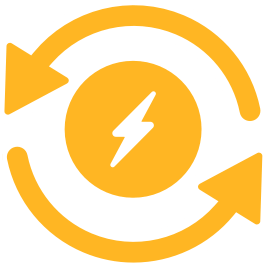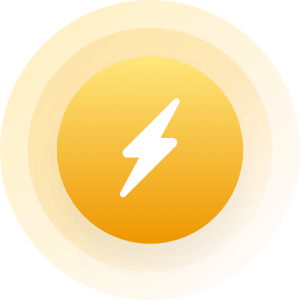|
Topic:
Confucious say:
|
|
|
Confucius say:
Woman who fly plane upside down, have crack up. |
|
|
|
|
|
We need a president who will do the right things. I don't know who that should be but I am sure it is not Bernie!
|
|
|
|
|
|
Actually West Texas is a little dry for me so I choose East Texas.
|
|
|
|
|
|
Examples of the one percent ... Bill and Hillery Clinton
|
|
|
|
|
|
The Senate still has the right to confirm ... or not.
|
|
|
|
|
|
2016... In the line of duty 10 MEN dead (8 shot), & 8 Police dogs.. in 41 days. What is wrong with this picture ? Political Correctness. |
|
|
|
|
|
Edited by
metalwing
on
Fri 02/12/16 07:48 PM
|
|
|
Some real science. Brain under construction Marijuana shows considerable promise for treating medical conditions including pain, muscle spasms, seizure disorders and nausea from cancer chemotherapy. At least some of those benefits are thought to come from cannabidiol, a chemical component of the marijuana plant not thought to produce mind-altering effects. But there's a lot left to learn about this and other chemical compounds in marijuana. Recently, the Senate recommended $800,000 for an Institute of Medicine study on medical marijuana, and has also encouraged the National Institutes of Health to support more research on cannabidiol. What's clear, however, is that marijuana's signature high comes from a psychoactive component known as tetrahydrocannabinol (THC). And evidence is mounting, says Weiss, that THC is not risk-free. In the short term, marijuana use has been shown to impair functions such as attention, memory, learning and decision-making. Those effects can last for days after the high wears off. Heavy marijuana use in adolescence or early adulthood has been associated with a dismal set of life outcomes including poor school performance, higher dropout rates, increased welfare dependence, greater unemployment and lower life satisfaction. But it's not clear that marijuana deserves the bulk of the blame. Some researchers have suggested that factors such as peer influence, emotional distress or a tendency toward problem behavior could predispose people to drug use as well as poor life outcomes. "Is marijuana the causal agent in these outcomes, or is it part of a variety of vulnerability factors?" Weiss asks. Few longitudinal studies have been conducted to follow the trajectories of young people before and after they take their first hit of marijuana. But one long-term prospective study from New Zealand showed worrisome findings. Duke University psychologist Terrie Moffitt, PhD, and colleagues collected data from the Dunedin Multidisciplinary Health and Development Study, longitudinal research that has followed 1,000 New Zealanders born in 1972. Participants answered questions about marijuana use at 18, 21, 26, 32 and 38. They also underwent neuropsychological testing at ages 13 and 38. The team found that persistent marijuana use was linked to a decline in IQ, even after the researchers controlled for educational differences. The most persistent users — those who reported using the drug in three or more waves of the study — experienced a drop in neuropsychological functioning equivalent to about six IQ points (PNAS, 2012). "That's in the same realm as what you'd see with lead exposure," says Weiss. "It's not a trifle." There are some reasons to think that adolescents may be uniquely susceptible to lasting damage from marijuana use. At least until the early or mid-20s, "the brain is still under construction," says Staci Gruber, PhD, a neuroscientist and director of the Cognitive and Clinical Neuroimaging Core and the Marijuana Investigations for Neuroscientific Discovery (MIND) Program at McLean Hospital/Harvard Medical School. During this period of neurodevelopment, the brain is thought to be particularly sensitive to damage from drug exposure. And the frontal cortex — the region critical to planning, judgment, decision-making and personality — is one of the last areas to fully develop, Gruber says. Also immature in teens is the endocannabinoid system. As its name implies, this system comprises the physiological mechanisms that respond to THC. That system is important for cognition, neurodevelopment, stress response and emotional control, and it helps to modulate other major neurotransmitter systems, says Krista Lisdahl, PhD, director of the Brain Imaging and Neuropsychology Laboratory at the University of Wisconsin, Milwaukee. Repeated exposure to marijuana can dial down cellular activity in the endocannabinoid system. Such interference might be a bigger problem for immature brains, says Lisdahl. "That sets the stage for why adolescents may be more sensitive to the effects of repeated marijuana exposure, from a neuroscience perspective." Nothing personal metalwing, but there's a slight conflict of interest here. Many people after their maverick experimental teenage or college years quit smoking marijuana but don't quit smoking. Instead of mj they smoke cigs or cigars because it's legal. People who otherwise wouldn't have smoked. Why is this relevant? Duke, originally Trinity (as in holy) University was founded by none other than RJ Reynolds. They don't want people to know that, but they still want to keep that revenue. The university, theddisassociated shell university, is a shell Corp for the unholy company and it's deadly products. Blue (oxygen starved) Devils, a Catholic school... Yep. I made two scientific posts. Try the other one. Both the Journal of Neuroscience and the American Psychological Association can't be controlled by the tobacco industry? |
|
|
|
|
|
Topic:
Sleeping naked...?
|
|
|
Allways!!
|
|
|
|
|
|
How can you arrest an inmate?
|
|
|
|
|
|
Anything loaded with big fat diamonds!!!
|
|
|
|
|
|
We were not blind when LIGO was built. It's just another tool to prove what we had previously proven in many different ways, i.e., Einstein was right. General Relativity has been proven in a completely different way.
LIGO does allow us to "SEE" in gravitational waves instead of just light. The waves don't come along very often in a form strong enough to measure.(our equipment eventually will get much better). Soon, we will be able to detect gravitational waves several times a year instead of one event every several years. As detection sensitivity increases, the distance we can detect something increases dramatically. |
|
|
|
|
|
It will take all the fizz out of the beer!!! Who wants flat beer!!!
Now a wine fountain, that makes sense!! |
|
|
|
|
|
Topic:
US plans $860m aid to Pak
|
|
|
Instead of Pakistan using their money to expand their nuclear program, maybe they should use their own money to protect it or same some money by dismantling it.
Is there really any chance of nuclear war between India and Pakistan? |
|
|
|
|
|
Some more real science.
Altered brains Indeed, a number of studies have found evidence of brain changes in teens and young adults who smoke marijuana. In 2013, Rocío Martín-Santos, MD, PhD, at the University of Barcelona, and colleagues reviewed 43 studies of chronic cannabis use and the brain. They found consistent evidence of both structural brain abnormalities and altered neural activity in marijuana users. Only eight of those studies focused on adolescents, but the findings from those studies suggested that both structural and functional brain changes emerge soon after adolescents start using the drug. Those changes may still be evident after a month of abstaining from the drug, the researchers reported (PLOS ONE, 2013). Some of those brain abnormalities have been linked to cognitive differences. Gruber found that regular, heavy marijuana users — those who reported smoking five of the last seven days, and more than 2,500 times in their lives — had damage to their brains' white matter, which helps enable communication among neurons. Those white matter changes were correlated with higher impulsivity, she found, particularly in people who began smoking before age 16 (Psychopharmacology, 2013). Much of Gruber's work compares heavy, regular marijuana users who began before and after age 16. Her results suggest there's greater risk in starting young. Compared with users who began after 16, early-onset smokers made twice as many mistakes on tests of executive function, which included planning, flexibility, abstract thinking and inhibition of inappropriate responses. As adults, those who started using before 16 reported smoking nearly 25 times per week, while those who started later smoked half as often, about 12 times per week. The early-onset smokers also reported smoking an average of nearly 15 grams each week, versus about 6 grams for their late-onset counterparts (Psychology of Addictive Behaviors, 2012). Gruber's participants had reported using marijuana at least five times in the past week. But other labs have found structural differences in the brains of less frequent users. Jodi Gilman, PhD, at Massachusetts General Hospital/Harvard Center for Addiction Medicine, and colleagues used MRI to look for brain changes in 18- to 25-year-olds who smoked marijuana at least once per week, but were not dependent on the drug. Compared with nonusers, the smokers had changes in the shape, volume and gray matter density of two brain regions associated with addiction: the nucleus accumbens (which plays a role in motivation, pleasure and reward processing) and the amygdala (a region involved in memory, emotion and decision-making). Participants who smoked more often had more significant differences (Journal of Neuroscience, 2014). |
|
|
|
|
|
Some real science.
Brain under construction Marijuana shows considerable promise for treating medical conditions including pain, muscle spasms, seizure disorders and nausea from cancer chemotherapy. At least some of those benefits are thought to come from cannabidiol, a chemical component of the marijuana plant not thought to produce mind-altering effects. But there's a lot left to learn about this and other chemical compounds in marijuana. Recently, the Senate recommended $800,000 for an Institute of Medicine study on medical marijuana, and has also encouraged the National Institutes of Health to support more research on cannabidiol. What's clear, however, is that marijuana's signature high comes from a psychoactive component known as tetrahydrocannabinol (THC). And evidence is mounting, says Weiss, that THC is not risk-free. In the short term, marijuana use has been shown to impair functions such as attention, memory, learning and decision-making. Those effects can last for days after the high wears off. Heavy marijuana use in adolescence or early adulthood has been associated with a dismal set of life outcomes including poor school performance, higher dropout rates, increased welfare dependence, greater unemployment and lower life satisfaction. But it's not clear that marijuana deserves the bulk of the blame. Some researchers have suggested that factors such as peer influence, emotional distress or a tendency toward problem behavior could predispose people to drug use as well as poor life outcomes. "Is marijuana the causal agent in these outcomes, or is it part of a variety of vulnerability factors?" Weiss asks. Few longitudinal studies have been conducted to follow the trajectories of young people before and after they take their first hit of marijuana. But one long-term prospective study from New Zealand showed worrisome findings. Duke University psychologist Terrie Moffitt, PhD, and colleagues collected data from the Dunedin Multidisciplinary Health and Development Study, longitudinal research that has followed 1,000 New Zealanders born in 1972. Participants answered questions about marijuana use at 18, 21, 26, 32 and 38. They also underwent neuropsychological testing at ages 13 and 38. The team found that persistent marijuana use was linked to a decline in IQ, even after the researchers controlled for educational differences. The most persistent users — those who reported using the drug in three or more waves of the study — experienced a drop in neuropsychological functioning equivalent to about six IQ points (PNAS, 2012). "That's in the same realm as what you'd see with lead exposure," says Weiss. "It's not a trifle." There are some reasons to think that adolescents may be uniquely susceptible to lasting damage from marijuana use. At least until the early or mid-20s, "the brain is still under construction," says Staci Gruber, PhD, a neuroscientist and director of the Cognitive and Clinical Neuroimaging Core and the Marijuana Investigations for Neuroscientific Discovery (MIND) Program at McLean Hospital/Harvard Medical School. During this period of neurodevelopment, the brain is thought to be particularly sensitive to damage from drug exposure. And the frontal cortex — the region critical to planning, judgment, decision-making and personality — is one of the last areas to fully develop, Gruber says. Also immature in teens is the endocannabinoid system. As its name implies, this system comprises the physiological mechanisms that respond to THC. That system is important for cognition, neurodevelopment, stress response and emotional control, and it helps to modulate other major neurotransmitter systems, says Krista Lisdahl, PhD, director of the Brain Imaging and Neuropsychology Laboratory at the University of Wisconsin, Milwaukee. Repeated exposure to marijuana can dial down cellular activity in the endocannabinoid system. Such interference might be a bigger problem for immature brains, says Lisdahl. "That sets the stage for why adolescents may be more sensitive to the effects of repeated marijuana exposure, from a neuroscience perspective." |
|
|
|
|
|
I think adults should be able to smoke all the weed they want ... and can afford with their own money.
I think all the laws concerning weed in particular, and some other drugs to some degree, should be focused on children. I have two step nephews who smoked pot til they dropped out of school. Even though many kids have no visible money to buy pot, somehow they manage to get some pot almost every day. Recent scientific studies (real ones) indicate that pot smoking in children slows the development of the brain. To me, looking after the welfare of the country's children is more important that the ease of an adult getting high. I don't do drugs but some of my friends smoke pot. |
|
|
|
|
|
Topic:
Messages without punctuation
|
|
|
Some folks don't know the difference between there and their, or than and then, or a million other things about the English language. So somebody who misses a few commas here and there doesn't bother me that much. wat dat u say der you huh? |
|
|
|
|
|
"Life as we know it" has a number of scenarios of ending.
Asteroid big enough to change everything but not big enough to kill everything. Asteroid big enough to kill pretty much everything. World economic collapse. Super volcano in Yellowstone. Nuclear war started by Iran. Nuclear was started by terrorists with bombs purchased from Pakistan. Germ Warfare (the easiest of all methods) Most likely is terminal Political Correctness. |
|
|
|
|
|
Topic:
Girls from India..
|
|
|
I have a question... Why is it that so many Indian men are out lurking for American women? Indian women are gorgeous. Internet laziness. |
|
|
|
|
|
What I don't understand is that lawyers have the ability to drag out litigation for very long periods. Why didn't Ferguson's attorneys delay any agreement until the next election where the Justice Dept MAY change to have a much different perspective?
One can only hope. |
|
|
|
|






